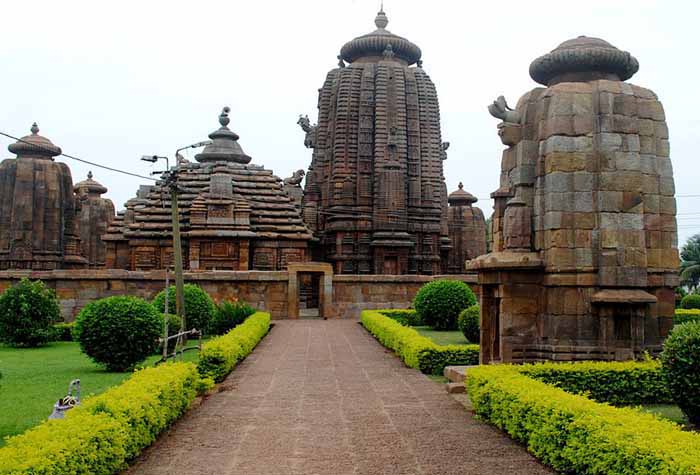Brahmeswara Temple

Information of Brahmeswara Temple, Bhubaneswar, Odisha
The Brahmeswara Temple is located in the capital city of Odisha that is Bhubaneswar. It lies in the east coast of the Indian Peninsular. It is a Hindu temple with the primary deity being Brahmeswara another name given to Lord Shiva who is the Supreme Being of the universe. The temple represents a typical Hindu temple of the medieval period and is followed by the Saivism sect of Hinduism.
Brahmeswara Temple Religious Significance
Like all the other Shiva temple Brahmeswara temple is flocked with devotees of Lord Shiva. Here Lord Shiva is considered as the Brahma the creator of the universe. The main festival celebrated in the temple is Shivaraatri the auspicious night dedicated to Lord Shiva. A large number of people flock the temple and stay awake all night singing, praying and receiving blessings from the almighty.
The tantric religion was also followed in the temple because evidences such as the figures of Chamunda and Lord Shiva in horrific states have been inscribed on the temple surface.
Another tradition followed was the Devadasi as inscriptions shows Queen Kolavati presenting beautiful women to the deity.
The temple remains open throughout the year and is open for public darshans during the day only.
Brahmeswara Temple Mythology & History
The Brahameshwara temple is said to have been built at the closing of the 9th century. The then rulers of Orissa from the Somavamsi Dynasty were ardent devotees of Lord Shiva. They built a number of temples dedicated to Lord Shiva out of which Brahmeswara Temple was one of them. According to the information available in the temple which has been gathered from the many inscriptions, carvings and sculptures the temple is said to have been built around 1058 AD. The mother of King Udyotakesari of the Somavamsi Dynasty, Queen Kolavati built the temple in the 18th year of their rule.
Brahmeswara Temple Architectural Significance
The Brahmeswara temple forms a part of the temples built later in the medieval periods. It represents distinct features of the Kalinga Architecture with a blend of Odissi tradition. The Brahmeswara temple is made up of sandstone making it easy for artisans to carve and sculpture the wall. There are four divisions of the temple the vimana, the Jagamohana, the natamandira and boghmandapa. The primary part of the temple is the Jagmohana or the hall of worship and consists of the sanctum sanctorum. The Jagmohana has numerous carved designs on its walls and represent Odissi tradition and ancient art. The figures included are of musicians with their musical instruments and dances in tradition Odissi classical style in different postures. It consists of a pyramidal roof not so much in height but is designed as layers like a pagoda.
The sanctum sanctorum consists of a Shiva Lingam made up of black stone and also idols of Goddess Laxmi paired with Lord Shiva in his ferocious form.
Another important part of the temple architecture is a tall spire which is known as a Shikhara an eyecatching feature in Hindu temples. The Shikhara is an Indian replica of a pagoda and is decorated with many designs carved on its surface. The designs are quite similar to other temple existing in the city of Bhubaneswar like the Mukteshwar temple and the Rajarani Temple. The tiered design on the spire is common in most of the Hindu Temples.
A walls and every surface of the temple is carved with perfect designs representing ancient culture and also figures of Gods. The carvings on the temple are techniques of wood carvings but applied to stones. The entrance of the temple is marked by flower designs and figures that are flying. There are figures of the eight direction guardian deities and the entrances are marked by lion figures. A large number of Figures of Gods are sculptured along with images of human, beasts and animals. The carvings on the temple also give information about the tantric religion with figures of Chamunda in furious postures. There are many other smaller shrines dedicated to the other Hindu Gods. The exterior of the temple is decorated beautifully with lush green grass and bushes which make the environment an ideal place for worship and peace.
- Andhra Pradesh Temples
- Assam Temples
- Bihar Temples
- New Delhi Temples
- Goa Temples
- Gujarat Temples
- Jammu and Kashmir Temples
- Karnataka Temples
- Kerala Temples
- Madhya Pradesh Temples
- Maharashtra Temples
- Odisha Temples
- Punjab Temples
- Rajasthan Temples
- Sikkim Temples
- Tamil Nadu Temples
- Telangana Temples
- Uttar Pradesh Temples
- Uttarakhand Temples
- West Bengal Temples